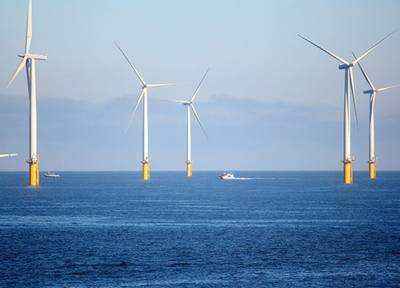Climate is Right for Clean Energy Firms
If you're ecology minded, the news hasn't been all that green of late, with ice caps and glaciers melting and storms becoming more destructive. But there is a huge silver lining for long-term investors in environmentally-friendly companies and technologies.
To stave off a nearly 5-degree global temperature increase by 2100, nations must cut their global greenhouse emissions by up to 70 percent by the middle of this century, according to a recent report by the Intergovernmental Panel on Climate Change.
There's little consensus among developed and emerging nations on how to effectively deal with climate change and reduce the amount of greenhouse gases, but there is agreement on one aspect of this global threat: Trillions of needed dollars will continue to pour into renewable and clean sources of energy, transportation, building and manufacturing.
Although investors have typically focused on a small group of "clean tech" funds and stocks, you can cast a wider net to capture the upside of this influx of investment. Nearly every company in the S&P 500 Index has some involvement in "greening" their operations from recycling to creating their own sources of clean energy.
Take wind power. The retailer Ikea recently announced it was buying a wind farm in Illinois. Microsoft Corp is purchasing a Texas wind facility. Facebook Inc, Google Inc and Wal-Mart Stores Inc are also investing in the technology.
On the solar power front, solar panel prices have plummeted and there are a host of collateral technologies such as battery storage, energy management systems and co-generation that deserve attention.
One of the oldest and most diversified mutual funds in this sector is the New Alternatives Fund Inc, which is up 35 percent for the last 12 months through April 17 and up 8 percent year to date, compared to just under one percent for the MSCI EAFE index. The fund is expensive to own, though, charging a 1.1 percent annual management fee and 4.75-percent initial sales charge.
The New Alternatives portfolio samples several companies from the clean tech sector, holding industry leaders like Vestas Wind Systems A/S (VWDRY), Johnson Controls Inc and American Water Works Co.
A less-costly fund to own is the PowerShares Cleantech ETF , which holds ABB Ltd, Corning Inc and Siemens AG, companies with several stakes in broad-based energy businesses. The fund charges 0.67 percent annually for management expenses. It's up 33 percent for the 12 months through April 17.
Landscape for Green Power
What will make alternative energy profitable is what experts called clean "distributed" power, that is, electricity that's not generated by old-line utilities on the grid using coal or nuclear energy. When clean energy becomes competitive with fossil fuels, that's when it makes economic sense, which has been increasingly the case.
Falling costs of alternative energy products in recent year are enhancing the potential of clean energy technologies and displacing "dirty" power plants.
According to a recent report by the consulting firm McKinsey & Company on solar energy, the drop in price residential consumers pay in the United States to install rooftop solar systems means "These cost reductions will put solar within striking distance, in economic terms, of new construction for traditional power-generation technologies, such as coal, natural gas, and nuclear energy."
The outlook for solar energy also applies in a general sense to wind and other clean-energy technologies. As costs of running a coal-fired or nuclear plant continue to rise, alternative energy prices keep falling, making them competitive on a mass scale.
As one of the smallest sub-sectors in the overall economy, though, clean energy has been volatile. And price wars in solar cells have turned leading solar companies valuations into roller coasters. First Solar Inc's stock price, for example, was in negative territory from 2009 through 2012, then skyrocketed 77 percent last year. The company is up 27 percent year-to-date through April 17.
Take heed: Even investing through a diversified index fund like the PowerShares ETF is going to be rocky. The fund has a five-year volatility measure of nearly 22, compared to about 16 for an MSCI World stock index. It also lost half of its value in 2008. If you're going to invest in this sector, stay away from concentrating your holdings in single stocks. While the climate for these stocks looks good at the moment - and will certainly pay dividends over time - the short-term outlook could change rapidly.
(By John Wasik; Editing by Beth Pinsker and Andrew Hay)





